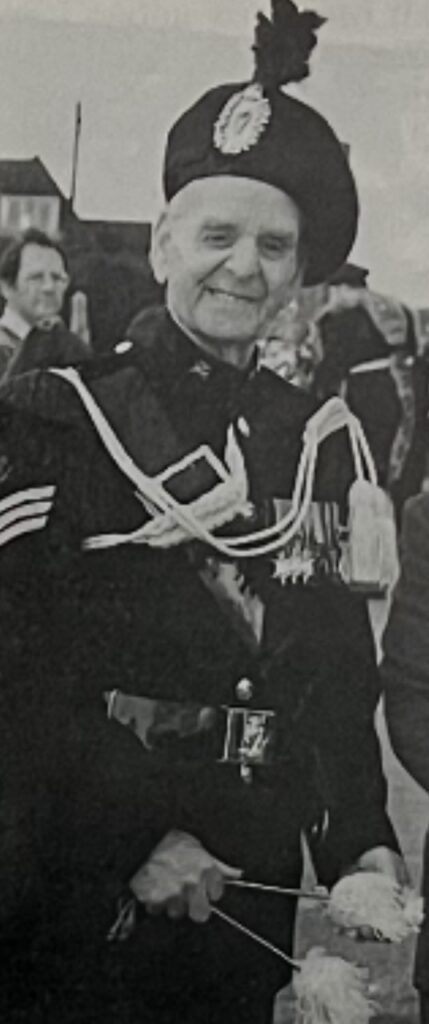The London Irish Rifles maintained two front line battalions throughout the Second World War. A third one, the Young Soldiers’ (70th) Battalion, was also formed in London at the outbreak of war before being disbanded in 1943.
‘The London Irish Rifles At War’, the History of the Regiment during the Second World War
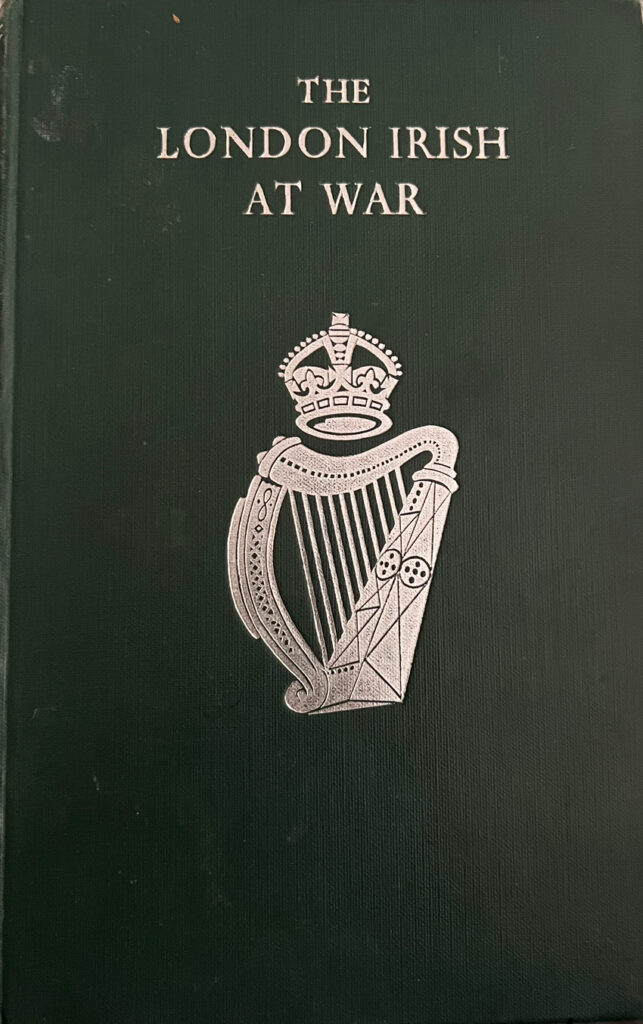
Roll of Honour of all the men during the Second World War, who died while serving with the London Irish Rifles
1ST BATTALION LONDON IRISH RIFLES
The 1st Battalion sailed from Liverpool to Iraq, via Freetown, Cape Town and Bombay, in August 1942, arriving in Basra in early November. They would spend six months with 56th (London) Division guarding the oil fields in the north of the country before moving onto Egypt in April 1943.
They saw their first action of the war in Sicily during July and August 1943 and then crossed to Naples in October 1943 and fought throughout the Italian campaign, apart from a four month break in Egypt, seeing bitter fighting periods at Monte Camino, the Garigliano river, Anzio and at the Gothic Line.
After crossing the Po river at the end of April 1945, the 1st Battalion finished their war time service near to Trieste in northern Italy.
Battle Honours of the 1st Battalion:
“Lentini” “Simeto Bridgehead” “Pursuit to Messina” “Sicily, 1943“
“Monte Camino” “Calabritto” “Garigliano Crossing” “Damiano” “Anzio” “Carroceto” “Coriano” “Croce”
“Rimini Line” “Senio Floodbank” “Ceriano Ridge” “Valli di Comacchio” “Italy, 1943-45“
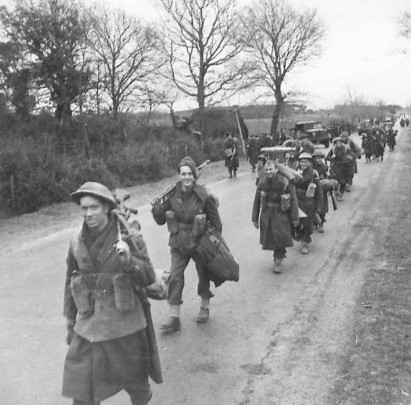
(
NA 11697): The 1st Bn. London Irish Rifles on the way to the front line at Anzio, 2 February 1944.
2ND BATTALION LONDON IRISH RIFLES
The 2nd Battalion sailed from Greenock to Algiers along with the rest of 38 (Irish) Brigade in November 1942, before seeing its first action in northern Tunisia near Bou Arada in December 1942.
The battalion faced a bitterly fought six month campaign struggle in the djebels west of Tunis before becoming the first marching troops to enter the city in May 1943. They were in action again in Sicily during August 1943 and then crossed to Taranto at the end of September 1943. The battalion fought throughout the Italian campaign, apart from a two month break in Egypt in July/August 1944, seeing fighting at Termoli, the Sangro river, Cassino, Lake Trasimene, Monte Spaduro and at the Argenta Gap before reaching the Po river on 25 April 1945.
The 2nd Battalion finished its war time service in Southern Austria where it was disbanded in early 1946.
War Diaries of the 2nd Battalion
Battle Honours of the 2nd Battalion:
“Bou Arada” “El Hadjeba” “Stuka Farm” “Heidous” “North Africa, 1942-43”
“Adrano” “Centuripe” “Salso Crossing” “Simeto Crossing” “Maletto” “Sicily 1943“
“Termoli” “Trigno” “Sangro” “Fossacesia” “Cassino II” “Casa Sinagoga” “Liri Valley” “Trasimene Line” “Sanfatucchio”
“Monte Spaduro” “Monte Grande” “Senio Floodbank” “Argenta Gap” “Italy, 1943-45“
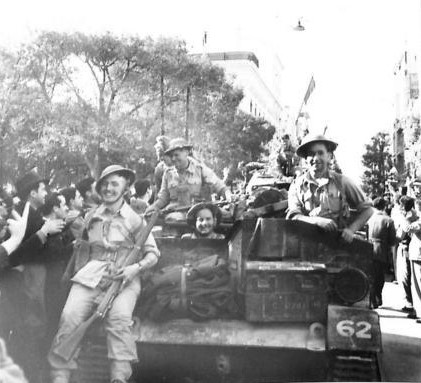
(NA 2560): Men of the 2nd Bn London Irish Rifles receive a terrific reception as they pass through Tunis, 8 May 1943.
38 (Irish) Brigade in North Africa and Italy, November 1942 to May 1945
The creation of the Irish Brigade within the British Army was a reminder of the time before the partition of the island of Ireland in 1922 when eight famous Irish regiments were mainly recruited from the young men of Ireland. Following partition, five of these regiments were dissolved. The survivors were the Royal Inniskilling Fusiliers (The Skins), the Royal Irish Fusiliers (The Faughs) and the Royal Ulster Rifles (formerly the Royal Irish Rifles).
The newly formed Irish Brigade comprised battalions from the three remaining Irish infantry regiments: the 1st Battalion of the Royal Irish Fusiliers; the 6th Battalion of the Royal Inniskilling Fusiliers and the 2nd Battalion of the London Irish Rifles, the territorial army counterpart of the Royal Ulster Rifles.
The first commander of the Irish Brigade was The O’Donovan, chief of the O’Donovan clan and a First World War veteran who had been awarded the Military Cross (MC) for bravery. The O’Donovan was succeeded in July 1942 by Nelson Russell, another Faugh, who had been born in Lisburn, county Antrim. Brigadier Russell had also been awarded the MC during the First World War and had been capped for playing cricket for Ireland in the 1920s. A third Faugh, Pat Scott, took over from Nelson Russell in February 1944 and would remain Brigade Commander of the Irish Brigade until the end of the war in Italy.
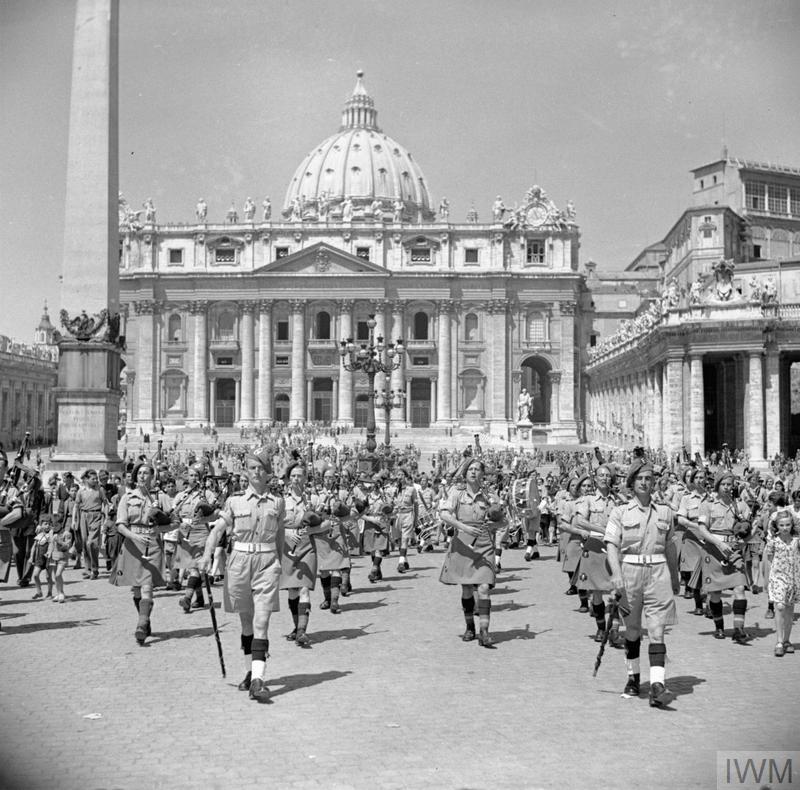
(NA 16179): The band of the Irish Brigade plays in front of St Peter’s Church in the Vatican City, Rome, 12 June 1944.
Honours and Awards awarded during the Second World War
Written Accounts
Photographic Archives
Major Desmond Woods with the Royal Ulster Rifles and London Irish Rifles
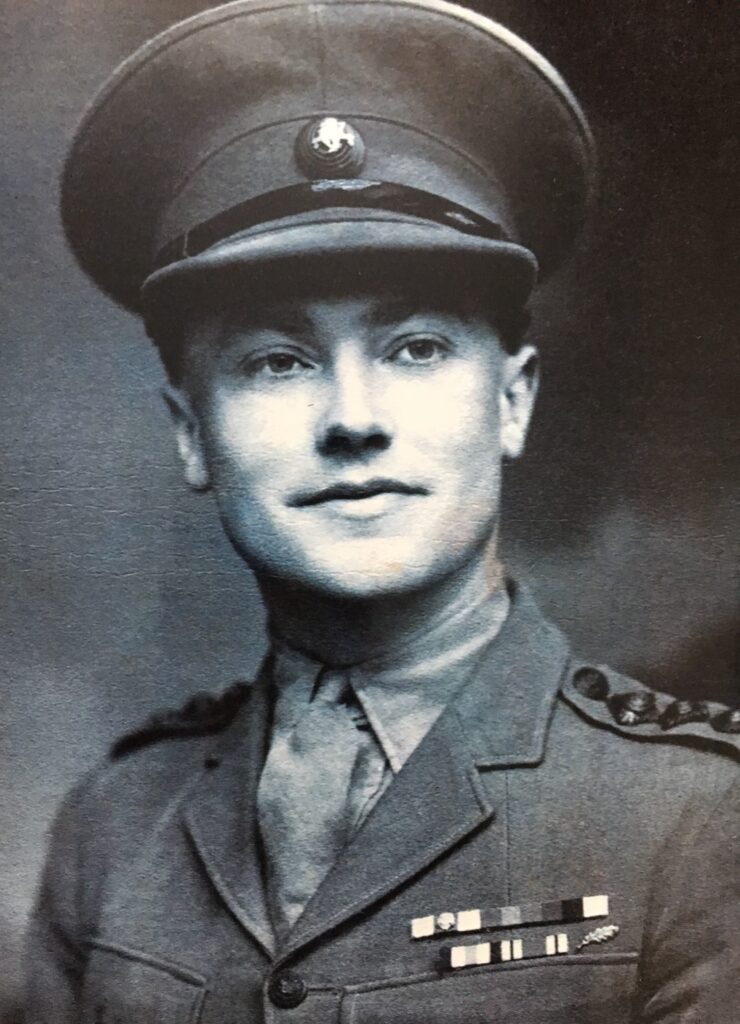
Lt Colonel Bala Bredin’s war time memories
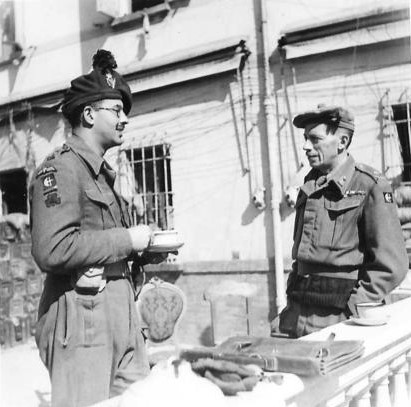
Dennis Mulqueen’s memories.
